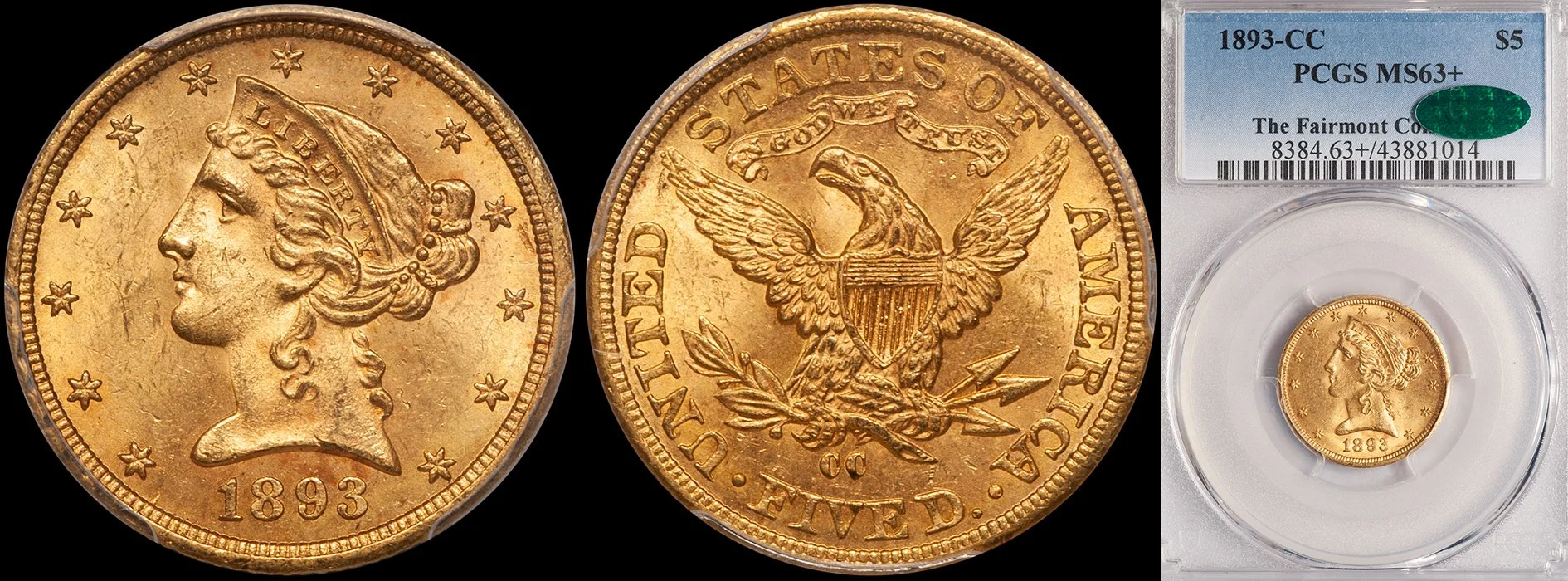First Impressions of the Newman Sale
/I’m freshly returned from Dallas, where I attended a spectacular coin dealer wedding, and combined the nuptials with viewing the remarkable silver coins that are being sold on behalf of Eric P. Newman. I spent close to two full days viewing, and it was one of the most pleasurable coin-related experiences I’ve had in a long time.
I’ll be writing more blogs on the Newman sale as I think it is one of the most important numismatic events which will occur in many years to come. But I’d like to share a few impressions about the coins — namely the appearance and surface preservation.
In a nutshell there were basically three types of coins in the sale:
- Coins which were spectacular before they were stored long term, and which were carefully handled in the ensuing 50-75+ years.
- Coins which were average quality before they were stored, but which have toned superbly and which now appear “better” than they might actually be.
- Coins which may (or may not) have been nice, but which were not well-stored and now are dull or drab. These are coins that almost certainly will be dipped if they are purchased by dealers. In some instances I believe that this dipping will significantly improve the coins.
Let’s look at an example of each of these three categories and briefly discuss the impact of how they were stored.
Hands down, my favorite group of coins in the sale was a date run of Large Size Bust Quarters, struck from 1796 to 1828. Viewed as a type, these are among the most difficult silver designs to find in high grades. The Newman collection had a number of Gems; far more than I can recall having ever seen in one place — even more than Eliasberg or Norweb.
Possibly my favorite early quarter, from a technical standpoint, was Lot 33334, an 1807 graded MS66* by NGC.
Close examination of this coin revealed nearly flawless surfaces with wonderful luster and no signs of hairlines or past attempts of “improvement.” I don’t know what this coin looked like 75 years ago, when it was probably lightly toned or even white, but the color it has acquired from storage was simply breathtaking. This coin, along with a number of the Bust Quarters and Bust Half Dollars in the collection, had been placed in old Wayte Raymond albums. These contain paper with high sulfur content and this tends to impart superb color with rainbow hues in instantly-recognizable concentric patterns.
The next classification of coin is one that wasn’t as nice as category #1 but which was beautifully toned from storage in a Wayte Raymond or another high sulfur source.
Lot 33321 was an 1840 With Drapery dime graded MS64* by NGC. In my opinion, this looked like a coin which had been cleaned many years ago and there were a decent number of hairlines on the surfaces. However, these were easy to overlook on account of the superb color shown on the obverse and reverse. I counted a number of coins in the sale which were clearly given a significant bump in grade due to exceptional second-generation color.
The third and final category are coins whose actual appearance is difficult to determine due to storage issues; probably in old 2x2 brown paper envelopes which imparted a lot of toning but not in the spectacular manner as seen on the two coins displayed above.
On his inexpensive coins, Mr. Newman clearly placed less of a premium on careful long-term storage. This is clearly easy to understand given that some of these cost of just a few dollars when they were purchased. An example of this is Lot 33883, an 1875-S Trade Dollar graded MS62 by NGC. It is hard to say what this coin looked like when it was first placed in the brown envelope it had been stored in for decades. Today, it was very deeply toned with somewhat impaired luster as a result.
Will this coin look better if it is dipped? Possibly yes, possibly no. One of the interesting things in this sale is trying to imagine what the category 3 coins look like without 75+ years of dirt, grime, and monochrome color.
The dealers who are best at determining which coins will dip well will be fascinated by this sale, and I have no doubt that they will be active participants. As I said above, this is not necessarily a bad thing. No one is going to dip a coin like the amazing multi-hued 1807 quarter shown above. And I doubt that any of the category 2 coins will be dipped either; nor should they. Ah, but the category 3 coins…here is an interesting subtext to the Newman Sale!
If you need representation at this sale, please feel free to contact me via email at dwn@ont.com.













